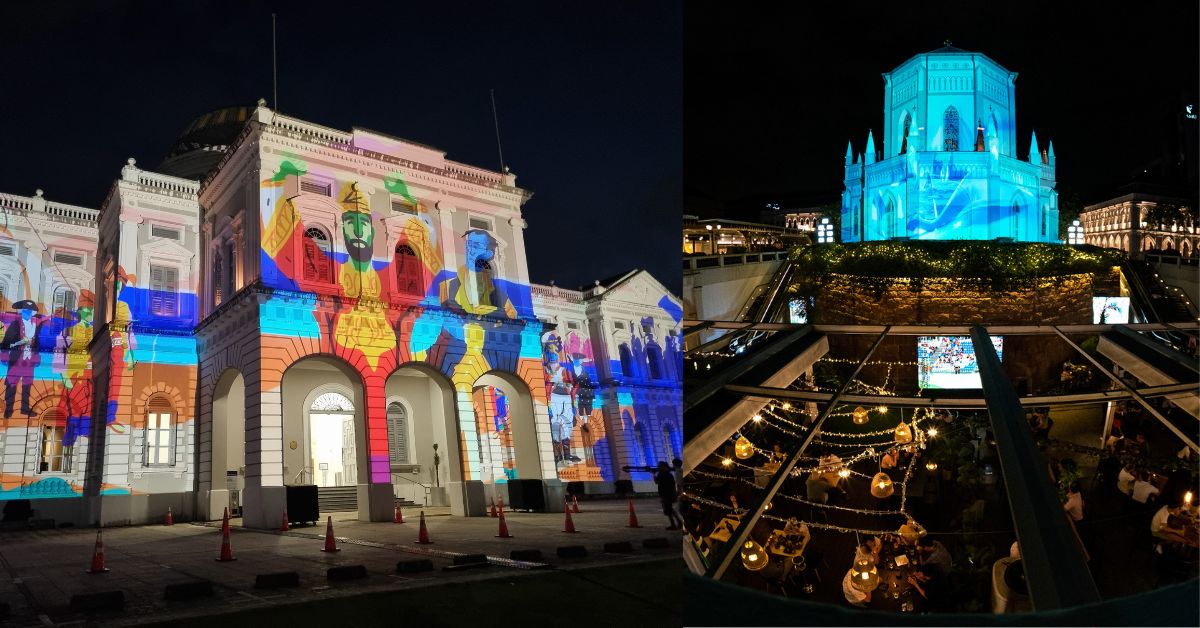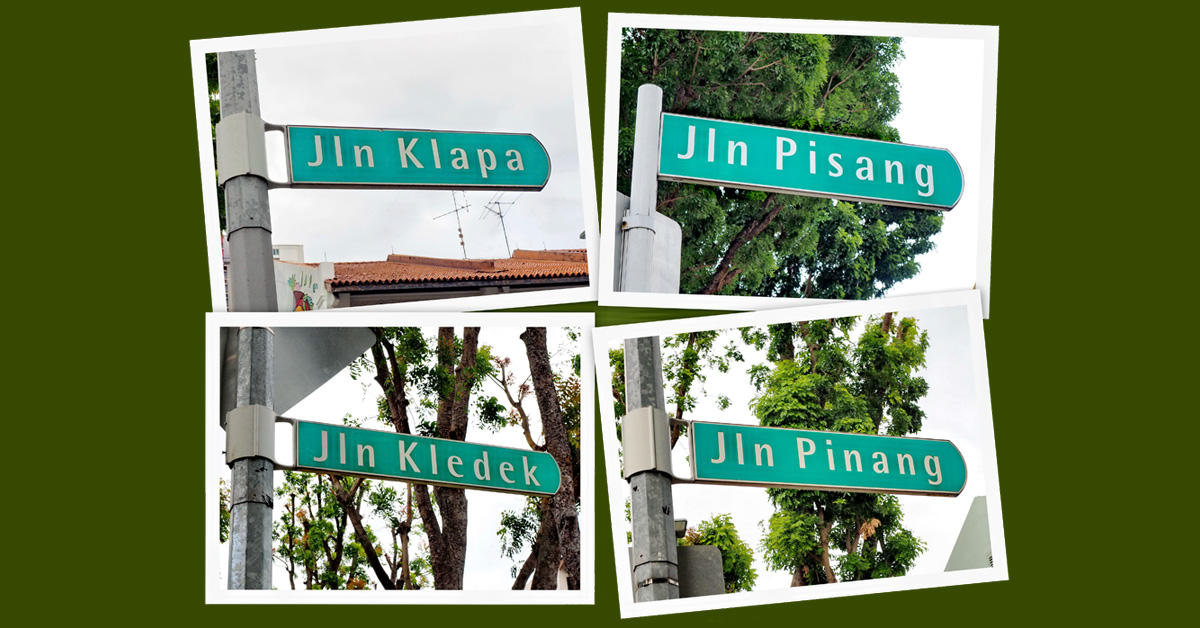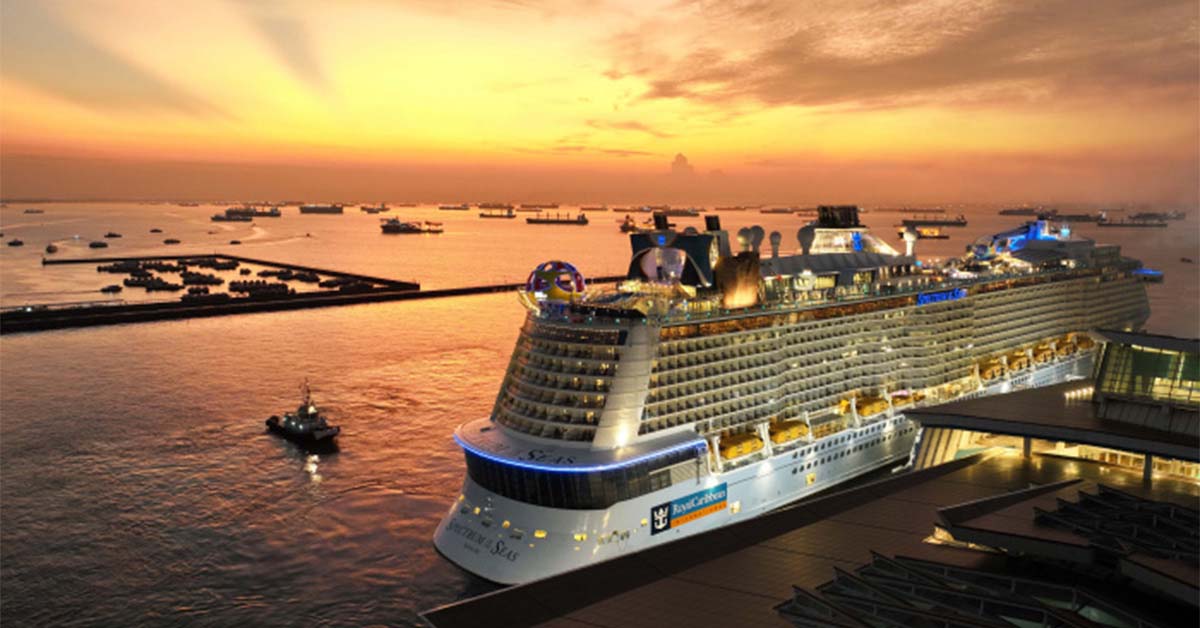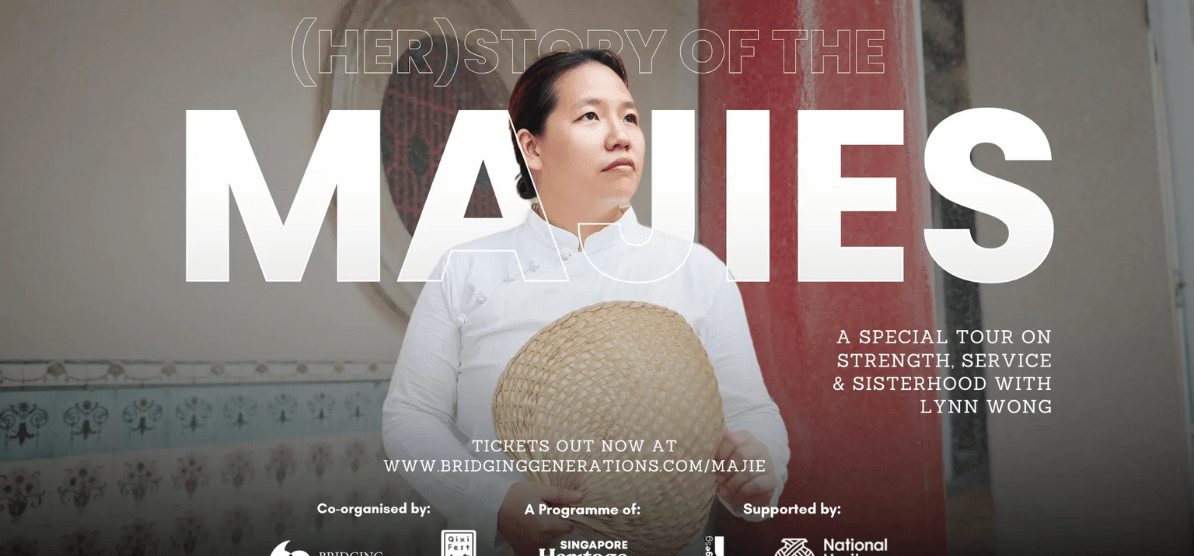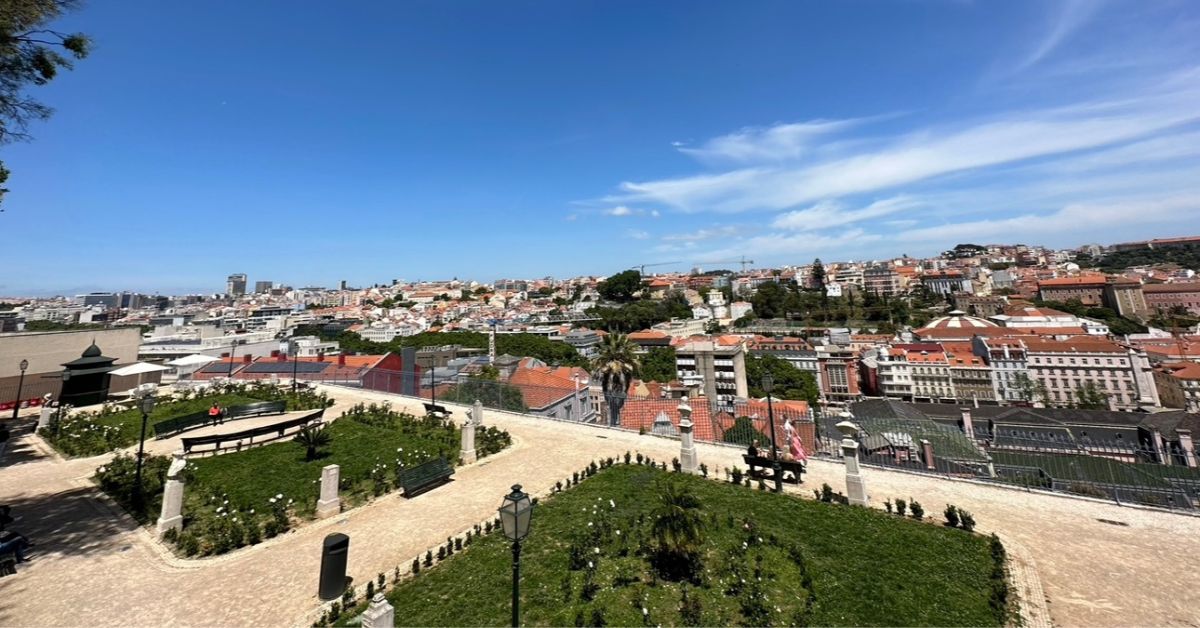
Lisbon, the capital of Portugal, is one of the most fascinating cities with cultural remains that go back to the Romans.
It is one of Europe’s oldest cities with a rich history, and filled with many fascinating sights, historic buildings, and a lively culture.
Tiles, Trams & Tuk Tuks
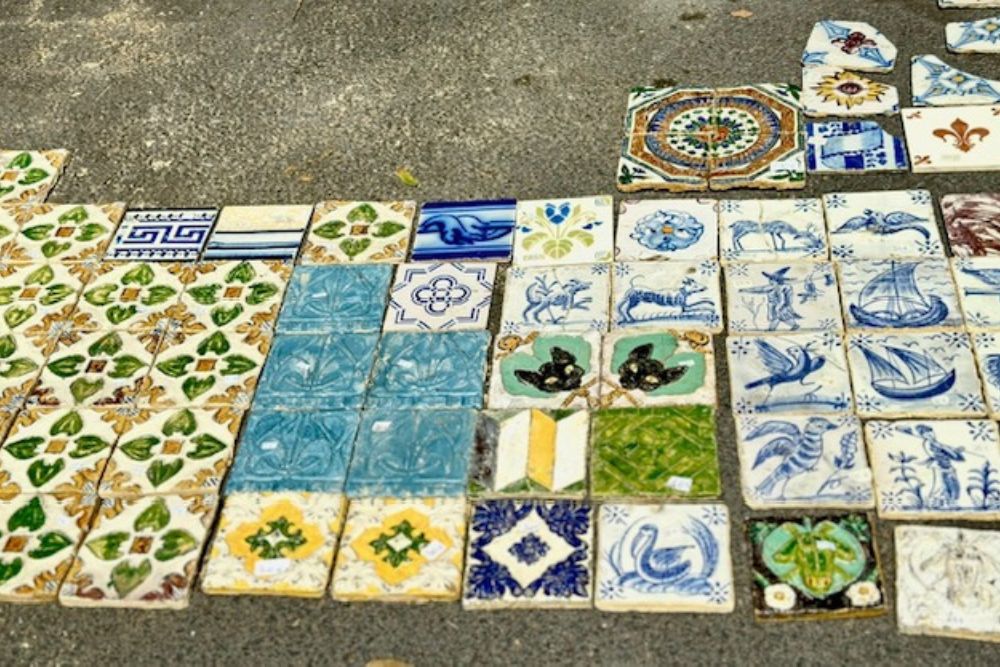
When you think of Portugal, the colourful tiles come to mind as quickly as the food, the beaches and, of course, the architecture. These tiles are known as azulejos in Portuguese, and these tiles in Lisbon are one of the defining elements of the city.
Advertisement
These colourful tiles brought back great childhood memories of the Peranakan ceramic tiles in Katong. The Portuguese explorers were the first to reach East Asia and they brought back with them the Asian influence of blue and white decorative glazing.
The Peranakans in Singapore, Malacca and Penang took a liking to these handcrafted colourful ceramic tiles in the earlier part of the 20th century which resulted in the tiles becoming a distinct feature of the Peranakan community. The tiles were incorporated into the design of the Peranakan shophouses, which still exist till today.
The colourful tiles are everywhere in Lisbon. You only have to walk the streets to realise that there are so many more hues in use with the tiles in Lisbon than just blue and white.
I don’t think you can appreciate the beauty of Lisbon without considering its Portuguese tiles. These tiles serve a beautiful yet crucial role in preserving the history and identity of the country.
They adorn the exteriors of city buildings, interiors of historic palaces and churches, and even fountains in lush gardens, and public squares.
Many of the residential buildings through the city of Lisbon and even inside the churches are covered in patterned tiles, full of colour – walls of art.
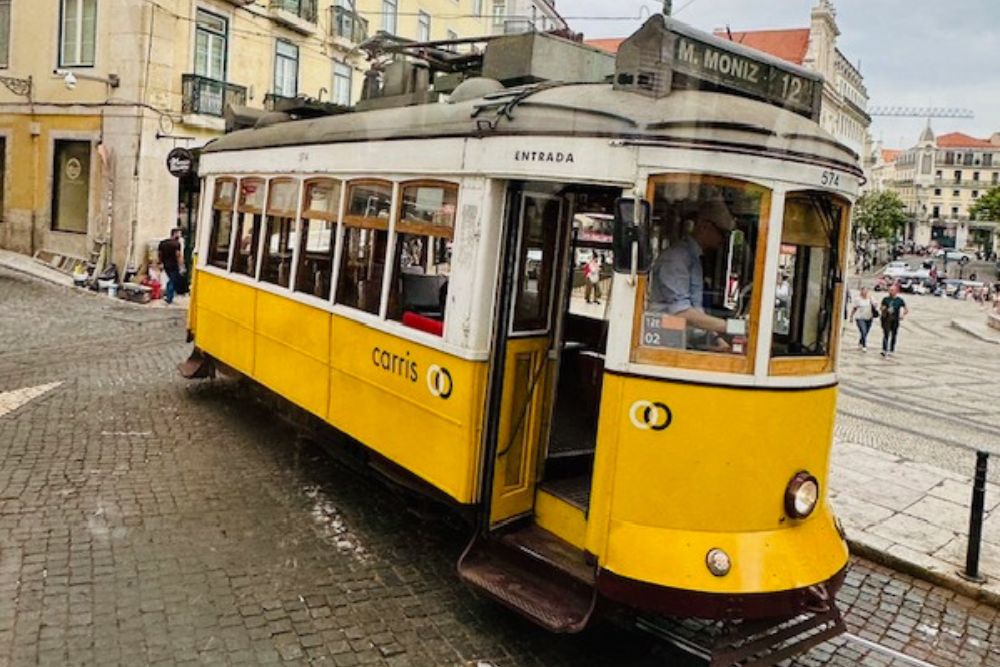
They glitter on the facades of apartment blocks, dazzle in the public squares, bring colour to the interiors of government buildings and churches, and I’ve seen tiles even on the trams and on tuks tuks (the 3-wheelers)!
Seven Hills, Spectacular Views Over Lisbon
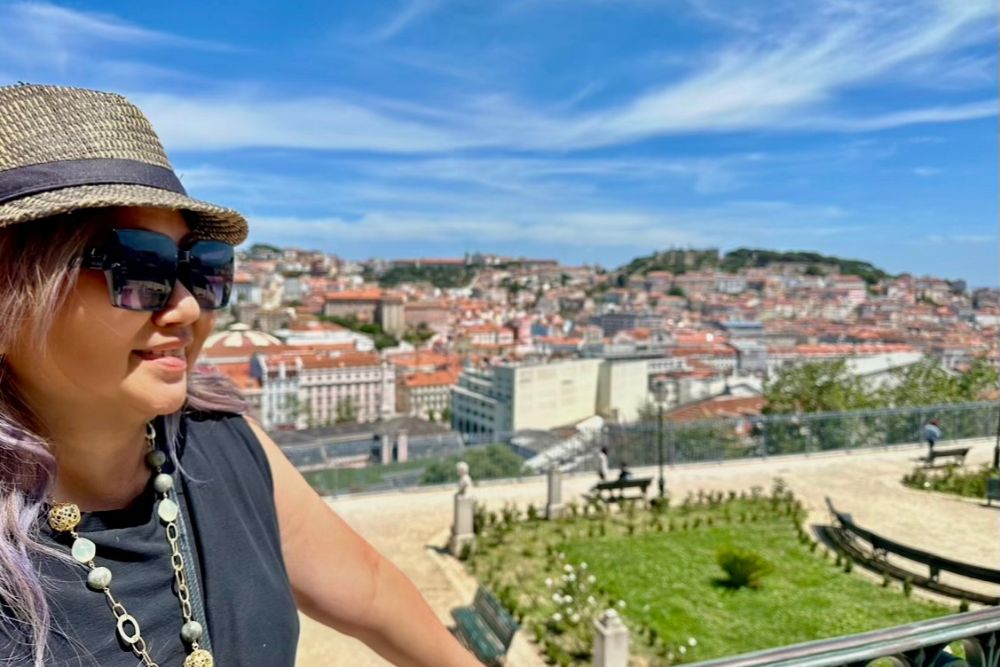
Lisbon is built on seven hills, and climbing this multi-level city can get tiring, so a good pair of walking shoes is highly recommended. As you can imagine, the views are amazing just about everywhere, from hilltops to rooftops and especially from the castle.
My favourite place for a view was to climb the streets up to the Miradouro e jardim do Torel viewpoint which is a little park in a residential area just off the Avenida da Libertade.
The National Dish Of Lisbon
One of the things you will notice in this city is that almost every restaurant advertises “Bacalhau”, which is a salted cod and the star of many local dishes here in Portugal.
The two popular dishes are Bacalhau à brás (shredded cod with fried potatoes and onions) and the other dish is Bacalhau com natas (cod with cream).
The Portuguese love this northern fish so much that it is part of their national identity. They even have a saying that states that there are at least 365 ways to prepare Bacalhau in Portugal – one for each day of the year!
The other famous foods that the locals love to eat in Lisbon are Ameijoas a bulhao pato (clams with sauce), Sardinhas (sardines), Polvo a lagareiro (octopus in olive oil) and Queijo de azeitao (semi-soft cheese) were some of my favourites.
Pastéis de Nata

In all the town plazas throughout the country, the pastelaria (pastry shop) is a mainstay of the Portuguese neighbourhood.
As a self-professed foodie with colonialism roots, the Pastéis de Nata, the signature custard egg tarts are a Portuguese institution and a must try.
Pastéis de nata were created before the 18th century by Catholic monks at the Jerónimos Monastery (Mosteiro dos Jerónimos).
Pastel de Belém is probably the most recognisable and the most famous Portuguese dessert and an icon when it comes to dishes to try in Portugal.
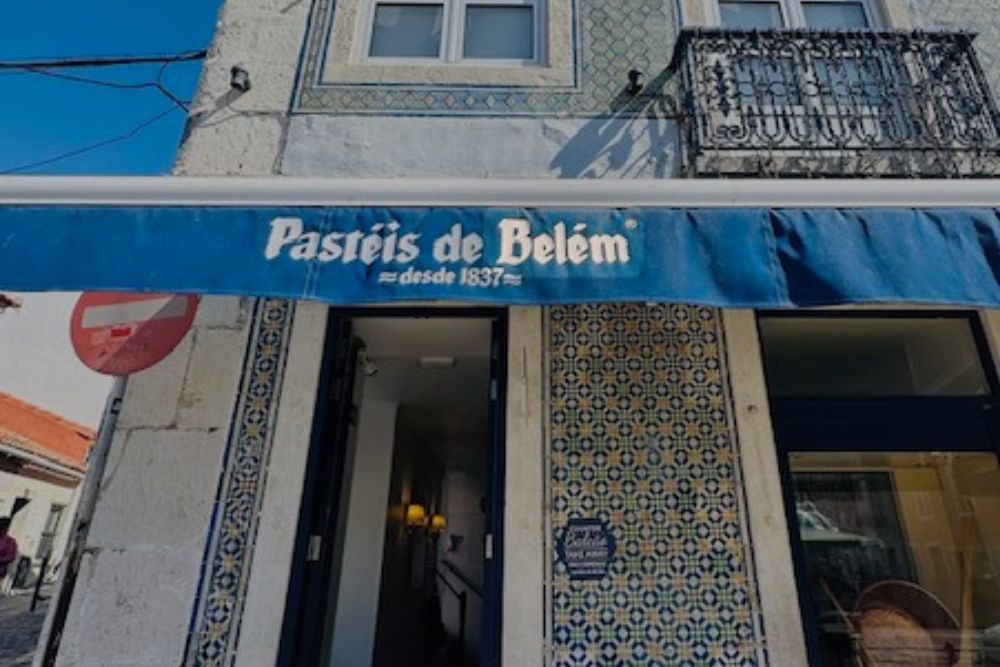
I visited the famous Pastéis de Belém Bakery and the other was Fábrica da Nata Bakery. Enjoy a cuppa with an egg tart or two at the cafe, and watch the world go by. Through a window, you will see rows of palm-sized pastries in stacked pans just about to be popped into the oven.
Ruby, Tawny Or White?

Port Wine, one of the great classic European wines, has a long and fascinating history. I had a tasting session at the Taylor’s Port wine shop and tasting room, the first of its kind in Lisbon.
Taylor’s Port wine shop is in a prestigious area within the historic district of Alfama, next to Chafariz del Rei, the first ever public fountain in Lisbon dating back to 1487. There are 15 wines available to try in the tasting room, starting at 5 euros.
On this trip, I was introduced to port wine as a digestif, and I must agree, it pairs perfectly with desserts and cheese.
As they say, the best way to learn about wine is by drinking it, so I did. You can order port at any restaurant or bar in Lisbon – it is a great way to end each meal.
Fado, The Lisbon Blues
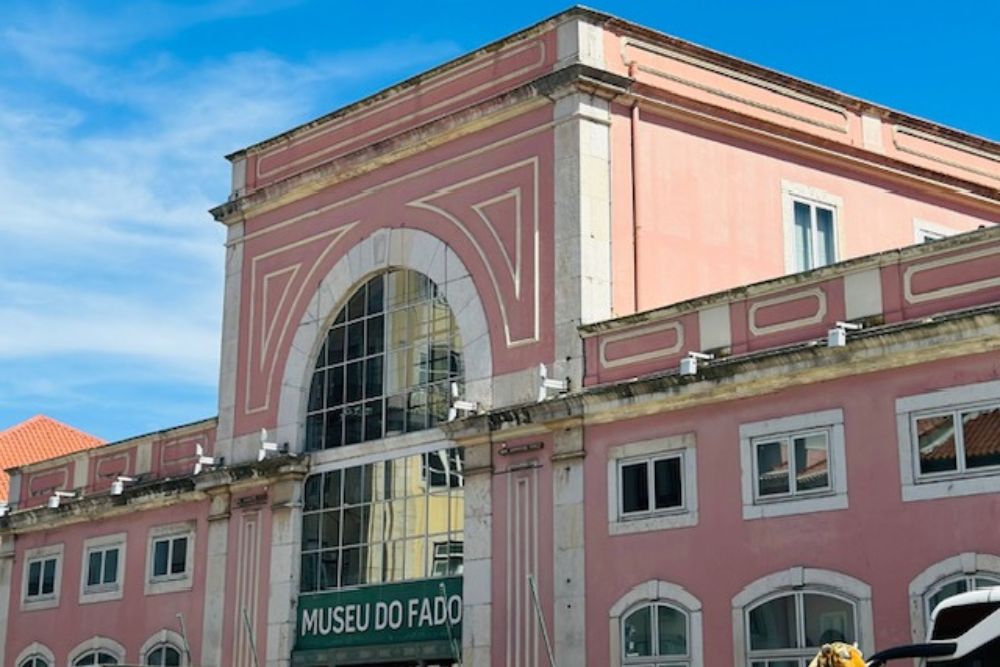
No trip to Lisbon is complete without visiting Museu do Fado (Fado Museum), located at the base of the Alfama, the most colourful neighbourhood in town and the best for informal Fado bars.
Fado music is like the Lisbon blues; mournful singing, a traditional lament. In 2011, Fado music became a part of the UNESCO World Heritage List.
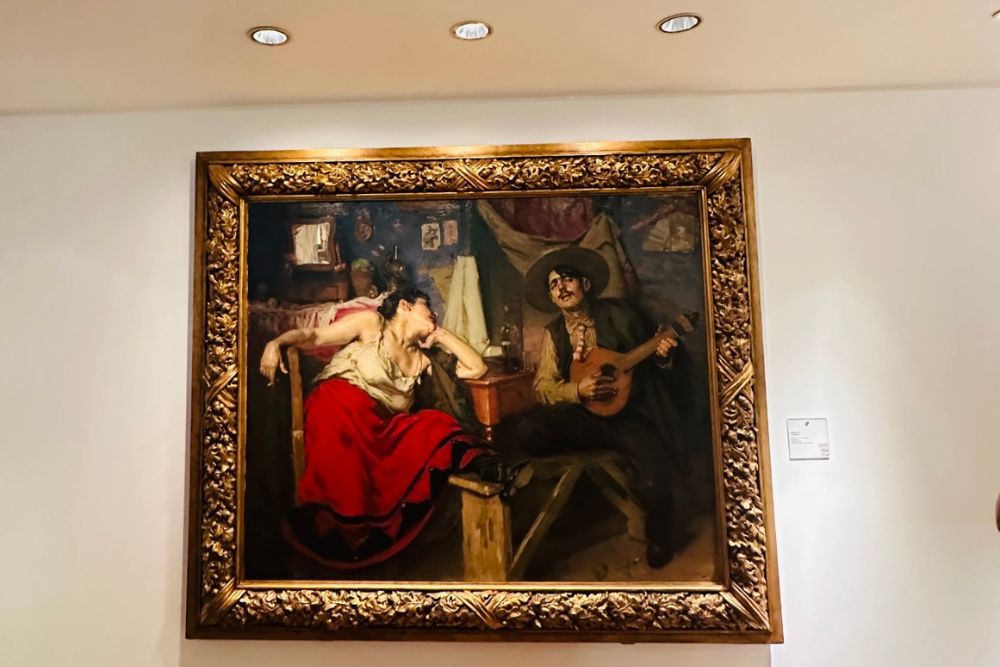
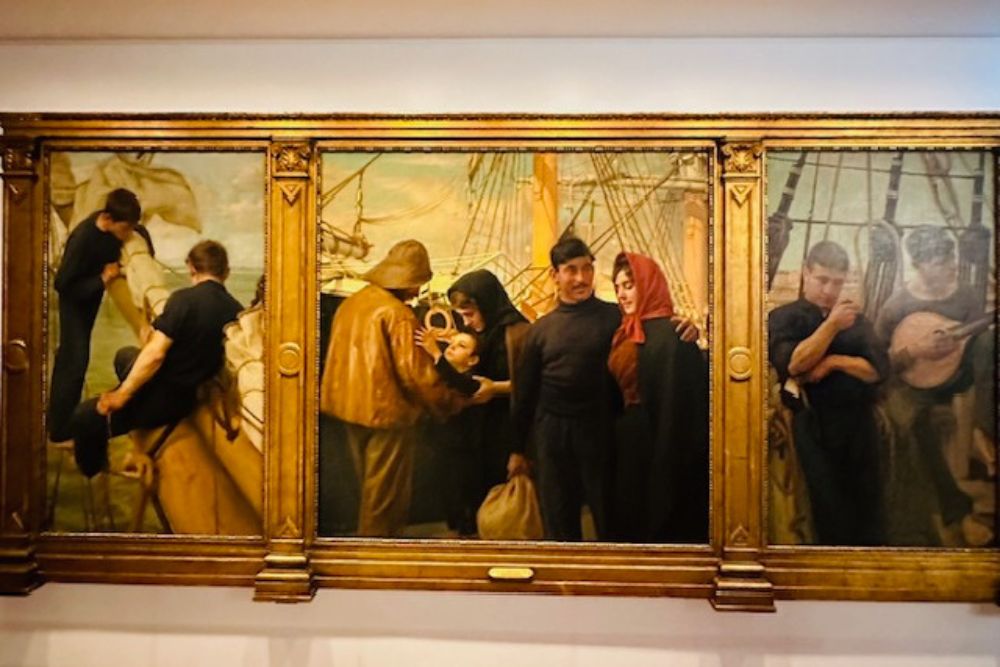
The Fado Museum tells the story of Fado in English. Three levels of wall murals show three generations of local Fado stars with an audio guide for accompaniment.
Fairy Tale Towns & Medieval Castles
Lisbon is a city of contrasts that seamlessly blends its rich history with contemporary vibrancy. There are so many hidden gems just a few kilometres away where you discover the charming towns and cobbled stoned villages.
Besides just visiting the famous towns of Porto and Fatima, I do highly recommend you venture out to some of these other captivating cities like Sintra, Coimbra, Evora and Obidos.
I highly recommend booking private tours to ensure that you can explore these fairy tale towns with medieval castles and picturesque hilltop villages.
Lisbon Is For The Young And The Young At Heart
Lisbon may be a bustling and vibrant city, but it is also a welcoming and safe destination, which is ideal for silver travellers seeking a mix of adventure and relaxation.
This city caters just as well to the budget traveller as the jet set and offers much to visitors of all ages.
It is a fantastic destination for any age and the best time of year to visit Lisbon is late spring (May/June) or in September.
A good pair of walking shoes is essential, as most of the roads are narrow cobbled stoned and the hills are steep. Booking private tours for sightseeing in Lisbon is highly recommended.
Lisbon is a combination of everything that makes a trip to Europe special. It has that mix of different but familiar with a unique and rich cuisine, a vibrant and thriving identity, and an air of time and history.
What really sets Lisbon apart from other cities is just how affordable it is. You can get a comfortable and chic hotel room and mouth-watering meals for a fraction of what you would spend in London or Paris.
Lisbon has turned out to be one of my favourite cities so far on my travels. It has many unique old traditions mixed with a trendy, international, modern ambience. Lisbon has many interesting districts each with its own particular atmosphere.
Optional Side Bar Narratives
Pros & Cons of Lisbon for Silver Travellers:
Pros
- A popular destination for senior travellers
- Relatively safe city
- Many fascinating sights and activities
- Friendly atmosphere
- English is widely spoken by all who work in tourism
- Good standard of hotels, restaurants, tourist services, tours and guides
Cons
- Many steep hills and steps
- Narrow, cobbled streets
- Incredibly hot in the summer
- Extremely crowded in popular tourist areas
Must See or Do in Lisbon:
- Alfama District
The historic Alfama district, one pf oldest and most picturesque areas in Lisbon, famous for its bohemian atmosphere, colourful houses, steeped cobbled stone staircases and beautiful views of the whole city.
You can stroll through narrow alleys and discover hidden fado bars.
- The Belém Tower & Jerónimos Monastery
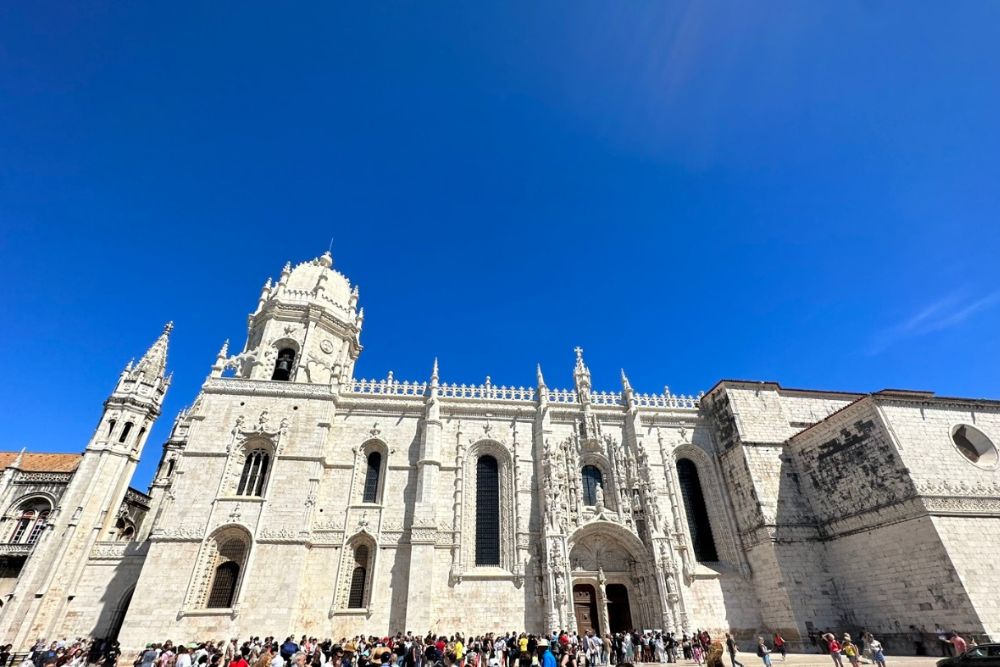
Two of the most important sights in Lisbon are Belém Tower and Jerónimos Monastery, both representing the story of the Portuguese Age of Discovery.
The Jerónimos Monastery is one of Lisbon’s most popular attractions, a UNESCO World Heritage site set facing the River Tagus in Belém.
I recommend spending half a day in Lisbon visiting the Jerónimos Monastery. Then take in the other things of interest in the neighbourhood of Belém such as the Monument to the Discoveries and Tower of Belém.

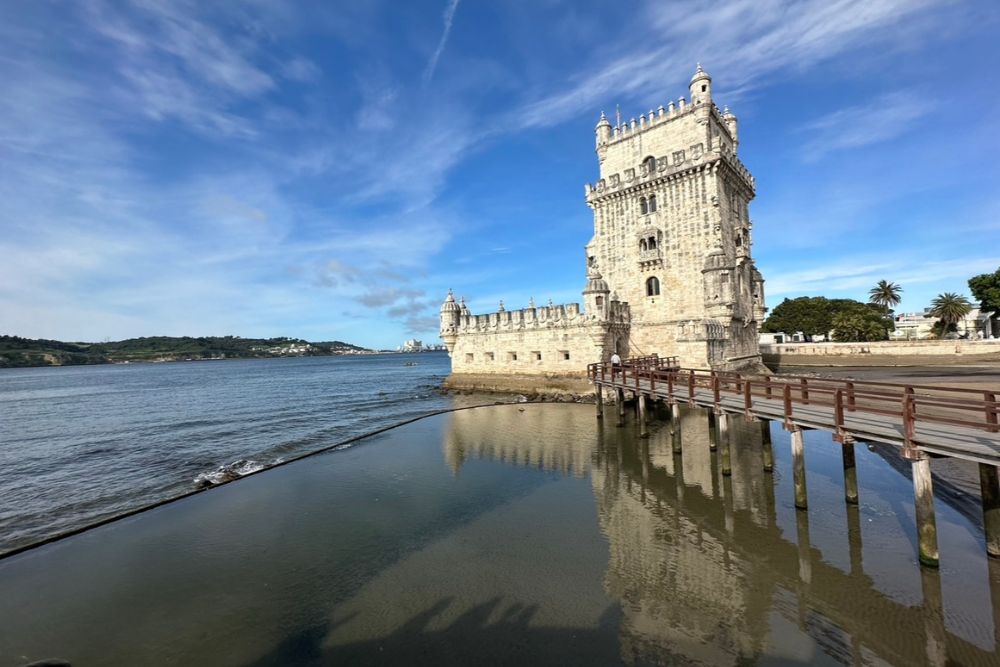
- Tuk Tuk Food Tour
It is an effortless way to explore the city’s hills and enjoy panoramic views on a tuk tuk, in and around Lisbon’s best neighbourhoods tasting traditional food and incredible photo stops in-between.
- Pastéis de Nata ~ Portuguese Custard Tarts
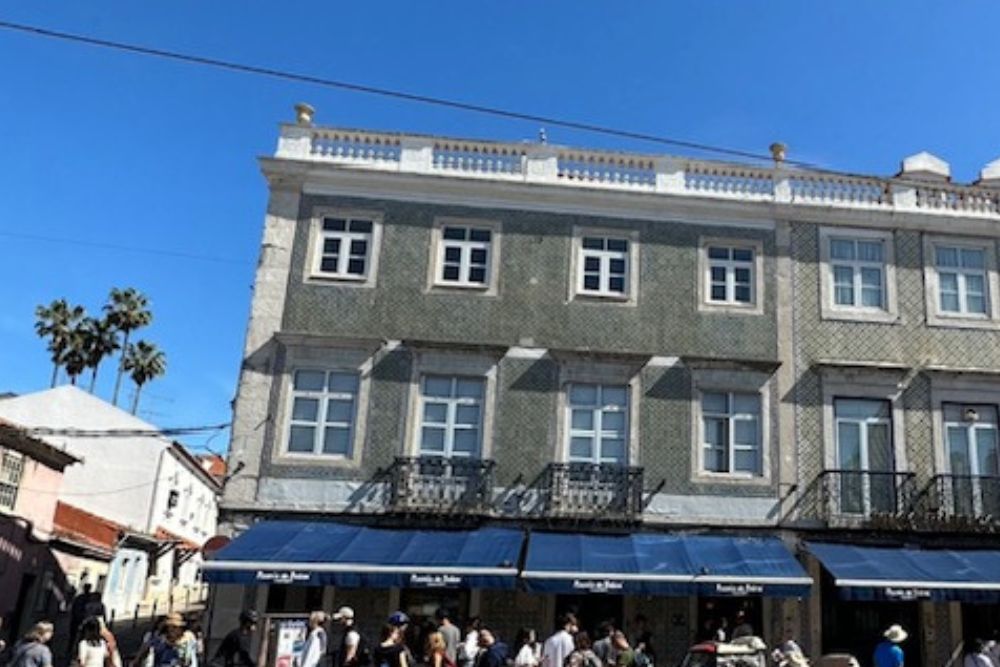
These signature Custard Tarts are a Portuguese institution. Check out Pastéis de Belém Bakery and Fábrica da Nata bakeries.
- Museu do Fado
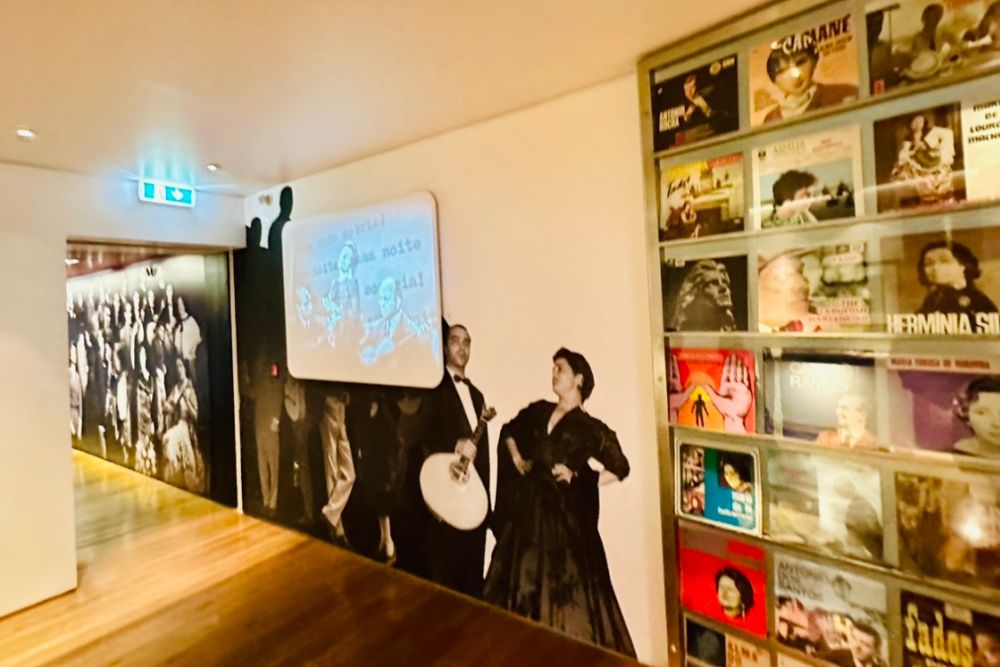
No trip to Lisbon is complete without visiting Museu do Fado or listening to some Fado music. It’s like the Lisbon blues. Fado is part of the UNESCO world heritage list.
- Portuguese Wines
Red and white Port wines, Vinho Verde (Portuguese Green Wine) and Douro Reds are a must-try and you can order them at any restaurants or bars in Lisbon.
Perhaps a Port Tasting experience at Taylor’s Port wine shop and tasting room located at Alfama.
- Street, Flea & Food Markets
Shop and eat like a local at a street market. Great places to dine and find something original, handmade, kitsch or vintage – and don’t forget to bargain with the street vendors, it’s part of the fun.
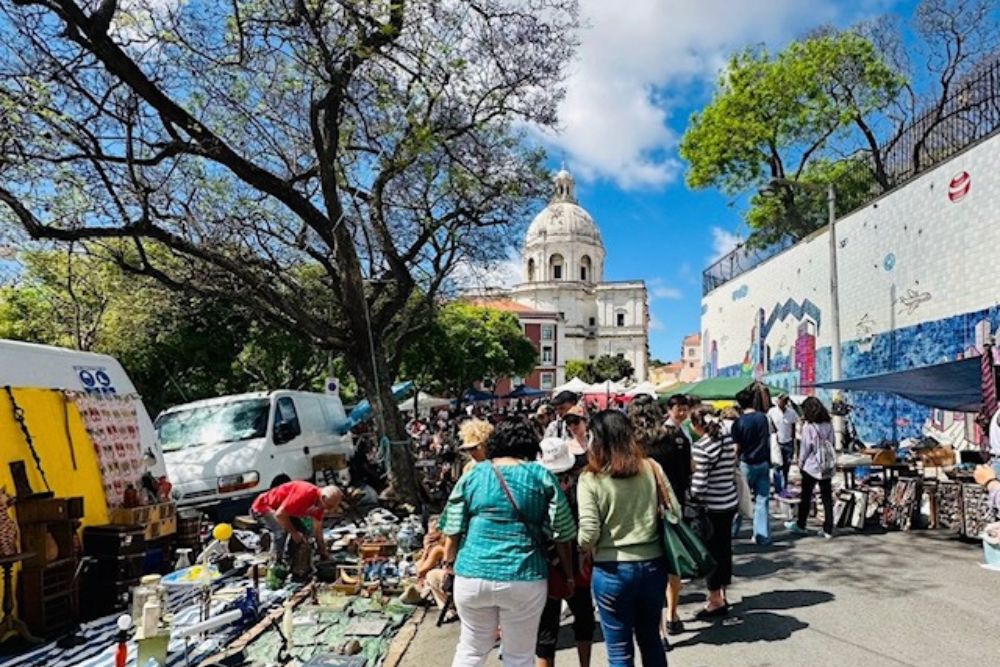
Time Out Market is pretty much a foodie heaven under one roof. This food market is located inside the historic Mercado da Ribeira, a traditional market hall built in the 1890s in Lisbon’s now trendy Cais do Sodre waterfront district. This market closes at midnight!
Feira da Ladra, flea market opens every Saturday and Tuesday morning. Locals and visitors flock to the Campo de Santa Clara square (next to the National Pantheon) to hunt for bargains and curios from hand-made artisan goods and books to clothes, coins, military objects, antiques and furniture.
Avenida da Liberdade is Lisbon’s most luxurious avenue and hosts a regular antiques’ market (every second weekend of the month and on the fourth Saturday). Great finds like second-hand books, ancient vinyl albums, and collectables.
- Bring A Piece Of Portugal Home
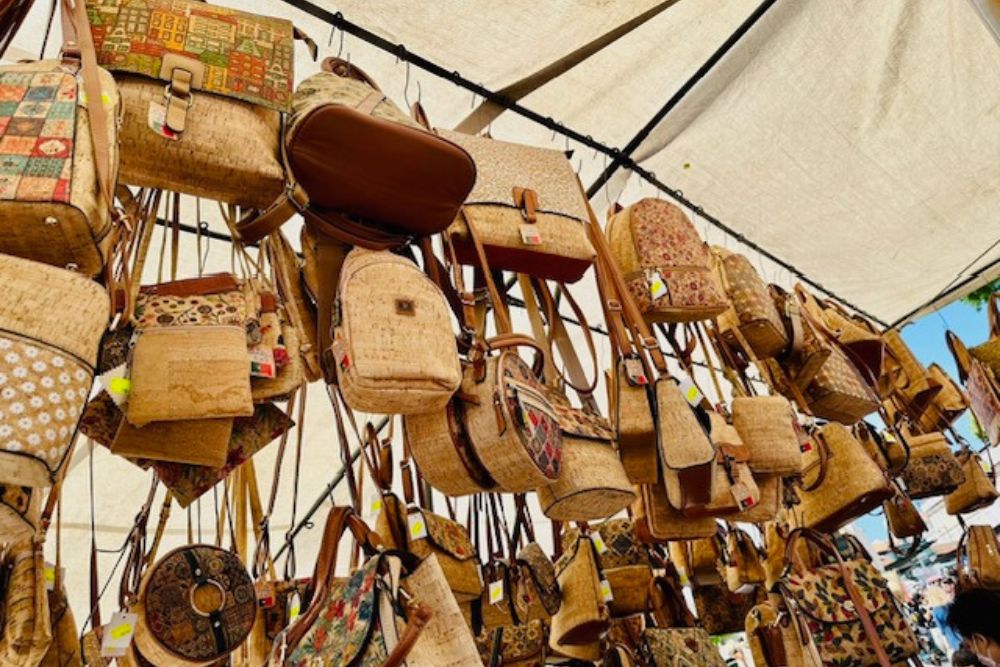
Souvenirs have wonderful ability to rekindle travel memories, spark conversations, bring a smile and spread happiness.
Port, Olive Oil, Piri Piri Sauce, Canned Sardines, Gold Filigree Jewellery, Street Artworks, Cork Products such as handbags, purses, ceramic tile coasters, hats, fans and bracelets make great gifts and souvenirs.

